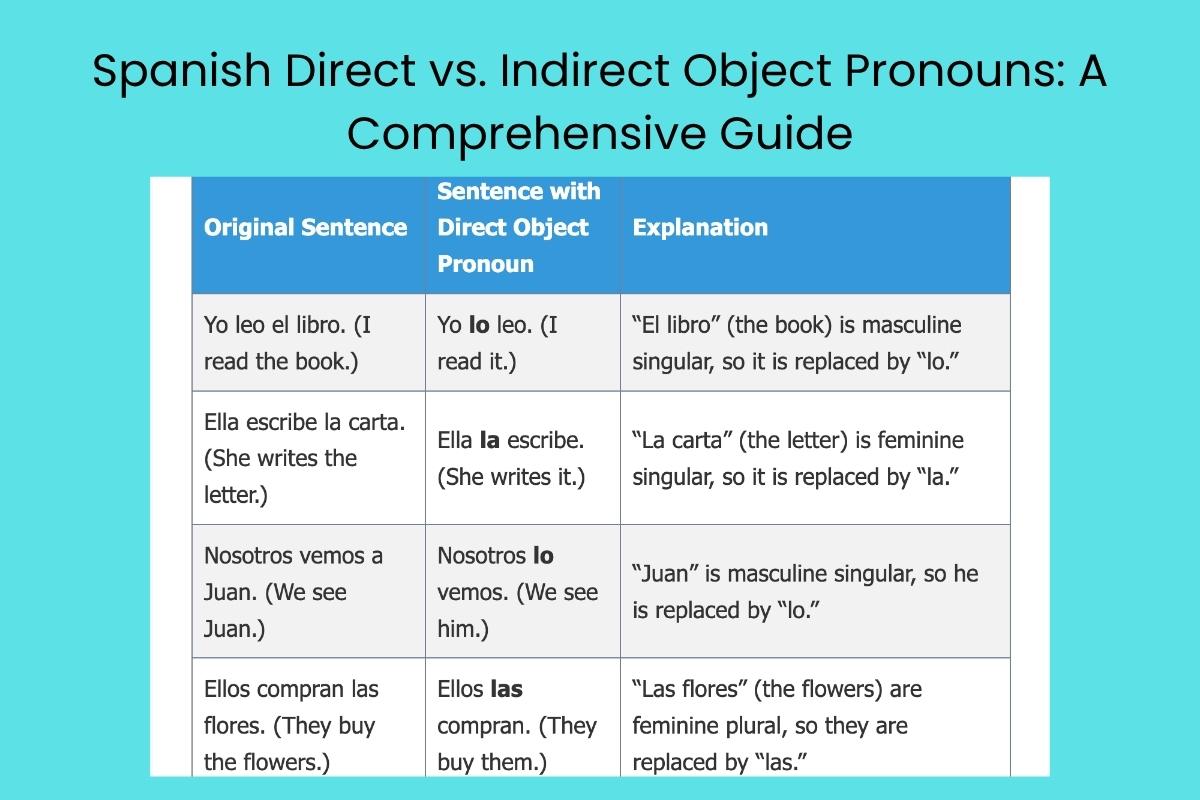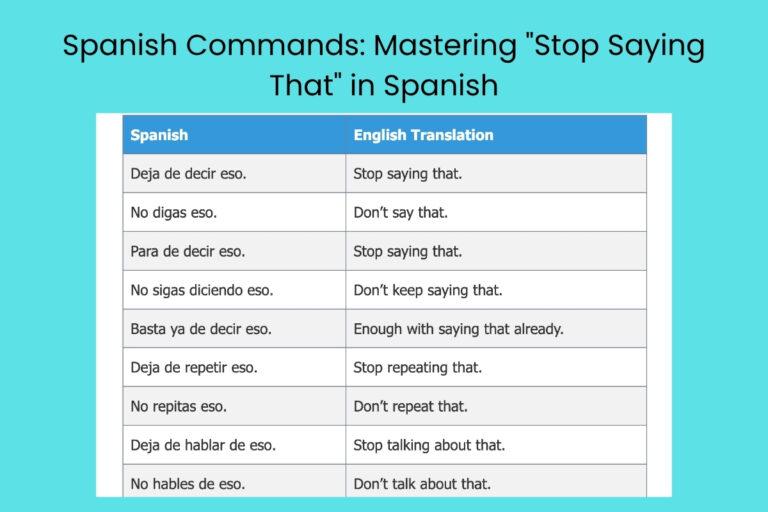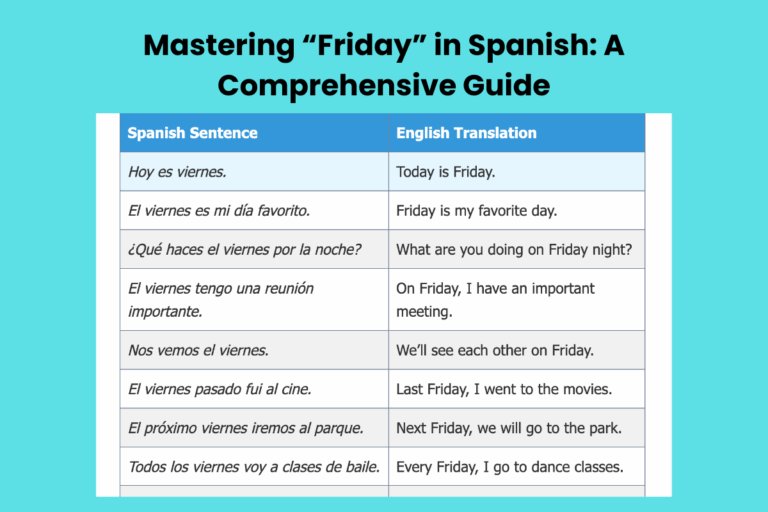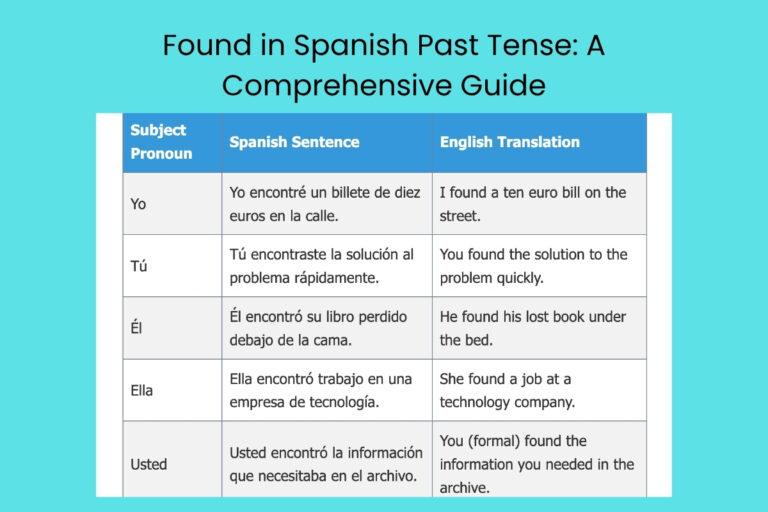Spanish Direct vs. Indirect Object Pronouns: A Comprehensive Guide
Mastering direct and indirect object pronouns is crucial for achieving fluency in Spanish. These pronouns replace nouns that receive the action of a verb (direct objects) or are affected by the action (indirect objects).
Understanding their function and placement will significantly improve your ability to construct grammatically correct and natural-sounding Spanish sentences. This guide is designed for Spanish learners of all levels, from beginners to advanced students, who want to solidify their understanding of these essential grammatical elements.
By the end of this article, you will be able to confidently identify and use direct and indirect object pronouns in various contexts.
Table of Contents
- Introduction
- Definition of Direct and Indirect Object Pronouns
- Structural Breakdown
- Types and Categories of Object Pronouns
- Examples of Direct and Indirect Object Pronouns
- Usage Rules for Object Pronouns
- Common Mistakes with Object Pronouns
- Practice Exercises
- Advanced Topics
- Frequently Asked Questions (FAQ)
- Conclusion
Definition of Direct and Indirect Object Pronouns
Direct and indirect object pronouns are essential components of Spanish grammar. They replace nouns that function as direct or indirect objects within a sentence, making sentences more concise and avoiding repetitive phrasing.
Understanding the difference between them is key to constructing grammatically correct and fluent Spanish.
Direct Object Pronouns
A direct object receives the direct action of the verb. It answers the question “what?” or “whom?” after the verb. A direct object pronoun replaces the noun that is the direct object. For example, in the sentence “Yo como la manzana” (I eat the apple), “la manzana” (the apple) is the direct object. The direct object pronoun would replace “la manzana.”
Indirect Object Pronouns
An indirect object identifies to whom or for whom the action of the verb is performed. It usually answers the question “to whom?” or “for whom?” after the verb. An indirect object pronoun replaces the noun that is the indirect object. In the sentence “Yo doy el libro a María” (I give the book to Maria), “a María” (to Maria) is the indirect object. The indirect object pronoun would replace “a María.”
Structural Breakdown
The structure of sentences using direct and indirect object pronouns follows specific rules in Spanish. Understanding these rules is crucial for correct pronoun placement and sentence construction.
Pronoun Placement
Generally, object pronouns are placed before the conjugated verb in Spanish. However, there are exceptions to this rule, particularly when using infinitives, gerunds, or affirmative commands. In these cases, the pronoun is attached to the end of the verb.
For example:
- Before the conjugated verb: Yo lo veo. (I see it.)
- Attached to an infinitive: Quiero verlo. (I want to see it.)
- Attached to a gerund: Estoy viéndolo. (I am seeing it.)
- Attached to an affirmative command: ¡Míralo! (Look at it!)
Pronoun-Verb Agreement
While object pronouns themselves do not directly affect verb conjugation, it’s important to remember that the verb must still agree with the subject of the sentence. The object pronoun simply replaces the object noun and doesn’t change the verb form.
For example:
- Yo como la manzana. (I eat the apple.)
- Yo la como. (I eat it.) (The verb “como” still agrees with “yo”)
Types and Categories of Object Pronouns
Spanish has specific pronouns for both direct and indirect objects. These pronouns vary depending on the gender and number of the noun they replace.
Direct Object Pronoun Forms
The direct object pronouns in Spanish are:
- me (me)
- te (you, informal)
- lo (him, it – masculine)
- la (her, it – feminine)
- nos (us)
- os (you, informal plural – Spain only)
- los (them – masculine)
- las (them – feminine)
Indirect Object Pronoun Forms
The indirect object pronouns in Spanish are:
- me (to/for me)
- te (to/for you, informal)
- le (to/for him, her, you formal)
- nos (to/for us)
- os (to/for you, informal plural – Spain only)
- les (to/for them, you formal plural)
The Le/La/Lo Problem
One of the most common challenges for Spanish learners is distinguishing between le, la, and lo. While la and lo are generally straightforward as feminine and masculine direct object pronouns, respectively, le is an indirect object pronoun that can refer to both masculine and feminine singular nouns, as well as the formal “usted.” To avoid ambiguity, it is common (and sometimes required, depending on the region) to clarify the referent with the prepositional phrase a él, a ella, or a usted.
For example:
- Le di el libro a Juan. (I gave the book to Juan.) – Can be clarified as: Le di el libro a Juan. / Le di el libro a él.
- Le di el libro a María. (I gave the book to Maria.) – Can be clarified as: Le di el libro a María. / Le di el libro a ella.
Examples of Direct and Indirect Object Pronouns
The following examples illustrate the use of direct and indirect object pronouns in various contexts. Pay close attention to the pronoun placement and the nouns they replace.
Direct Object Pronoun Examples
This table showcases various sentences using direct object pronouns, demonstrating their placement and agreement with the nouns they replace.
| Original Sentence | Sentence with Direct Object Pronoun | Explanation |
|---|---|---|
| Yo leo el libro. (I read the book.) | Yo lo leo. (I read it.) | “El libro” (the book) is masculine singular, so it is replaced by “lo.” |
| Ella escribe la carta. (She writes the letter.) | Ella la escribe. (She writes it.) | “La carta” (the letter) is feminine singular, so it is replaced by “la.” |
| Nosotros vemos a Juan. (We see Juan.) | Nosotros lo vemos. (We see him.) | “Juan” is masculine singular, so he is replaced by “lo.” |
| Ellos compran las flores. (They buy the flowers.) | Ellos las compran. (They buy them.) | “Las flores” (the flowers) are feminine plural, so they are replaced by “las.” |
| Tú comes la pizza. (You eat the pizza.) | Tú la comes. (You eat it.) | “La pizza” (the pizza) is feminine singular, so it is replaced by “la.” |
| Yo necesito el coche. (I need the car.) | Yo lo necesito. (I need it.) | “El coche” (the car) is masculine singular, so it is replaced by “lo.” |
| Ella tiene la llave. (She has the key.) | Ella la tiene. (She has it.) | “La llave” (the key) is feminine singular, so it is replaced by “la.” |
| Nosotros bebemos el agua. (We drink the water.) | Nosotros la bebemos. (We drink it.) | “El agua” (the water) is feminine singular, so it is replaced by “la.” (Note: “agua” is feminine despite starting with “el” due to phonetic reasons). |
| Ellos leen los periódicos. (They read the newspapers.) | Ellos los leen. (They read them.) | “Los periódicos” (the newspapers) are masculine plural, so they are replaced by “los.” |
| Tú escuchas la música. (You listen to the music.) | Tú la escuchas. (You listen to it.) | “La música” (the music) is feminine singular, so it is replaced by “la.” |
| Yo miro la televisión. (I watch the television.) | Yo la miro. (I watch it.) | “La televisión” (the television) is feminine singular, so it is replaced by “la.” |
| Ella vende la casa. (She sells the house.) | Ella la vende. (She sells it.) | “La casa” (the house) is feminine singular, so it is replaced by “la.” |
| Nosotros visitamos el museo. (We visit the museum.) | Nosotros lo visitamos. (We visit it.) | “El museo” (the museum) is masculine singular, so it is replaced by “lo.” |
| Ellos construyen los edificios. (They build the buildings.) | Ellos los construyen. (They build them.) | “Los edificios” (the buildings) are masculine plural, so they are replaced by “los.” |
| Tú usas el ordenador. (You use the computer.) | Tú lo usas. (You use it.) | “El ordenador” (the computer) is masculine singular, so it is replaced by “lo.” |
| Yo preparo la cena. (I prepare the dinner.) | Yo la preparo. (I prepare it.) | “La cena” (the dinner) is feminine singular, so it is replaced by “la.” |
| Ella lava los platos. (She washes the dishes.) | Ella los lava. (She washes them.) | “Los platos” (the dishes) are masculine plural, so they are replaced by “los.” |
| Nosotros limpiamos la mesa. (We clean the table.) | Nosotros la limpiamos. (We clean it.) | “La mesa” (the table) is feminine singular, so it is replaced by “la.” |
| Ellos arreglan los coches. (They fix the cars.) | Ellos los arreglan. (They fix them.) | “Los coches” (the cars) are masculine plural, so they are replaced by “los.” |
| Tú abres la ventana. (You open the window.) | Tú la abres. (You open it.) | “La ventana” (the window) is feminine singular, so it is replaced by “la.” |
Indirect Object Pronoun Examples
This table provides examples of sentences using indirect object pronouns, highlighting their function in indicating to whom or for whom an action is performed.
| Original Sentence | Sentence with Indirect Object Pronoun | Explanation |
|---|---|---|
| Yo doy el libro a María. (I give the book to Maria.) | Yo le doy el libro. (I give the book to her.) | “A María” (to Maria) is replaced by “le.” |
| Él escribe una carta a mí. (He writes a letter to me.) | Él me escribe una carta. (He writes a letter to me.) | “A mí” (to me) is replaced by “me.” |
| Nosotros compramos flores para ti. (We buy flowers for you.) | Nosotros te compramos flores. (We buy flowers for you.) | “Para ti” (for you) is replaced by “te.” |
| Ellos dan regalos a nosotros. (They give gifts to us.) | Ellos nos dan regalos. (They give gifts to us.) | “A nosotros” (to us) is replaced by “nos.” |
| Tú dices la verdad a Juan. (You tell the truth to Juan.) | Tú le dices la verdad. (You tell the truth to him.) | “A Juan” (to Juan) is replaced by “le.” |
| Yo pregunto a usted. (I ask you – formal.) | Yo le pregunto. (I ask you.) | “A usted” (to you – formal) is replaced by “le.” |
| Ella cocina la cena para mí. (She cooks dinner for me.) | Ella me cocina la cena. (She cooks dinner for me.) | “Para mí” (for me) is replaced by “me.” |
| Nosotros enviamos un correo electrónico a ellos. (We send an email to them.) | Nosotros les enviamos un correo electrónico. (We send an email to them.) | “A ellos” (to them) is replaced by “les.” |
| Tú compras un regalo para ella. (You buy a gift for her.) | Tú le compras un regalo. (You buy a gift for her.) | “Para ella” (for her) is replaced by “le.” |
| Yo explico la lección a los estudiantes. (I explain the lesson to the students.) | Yo les explico la lección. (I explain the lesson to them.) | “A los estudiantes” (to the students) is replaced by “les.” |
| Él canta una canción para nosotros. (He sings a song for us.) | Él nos canta una canción. (He sings a song for us.) | “Para nosotros” (for us) is replaced by “nos.” |
| Ella escribe un mensaje a ti. (She writes a message to you.) | Ella te escribe un mensaje. (She writes a message to you.) | “A ti” (to you) is replaced by “te.” |
| Nosotros decimos la verdad a ellos. (We tell the truth to them.) | Nosotros les decimos la verdad. (We tell the truth to them.) | “A ellos” (to them) is replaced by “les.” |
| Tú das el dinero a mí. (You give the money to me.) | Tú me das el dinero. (You give the money to me.) | “A mí” (to me) is replaced by “me.” |
| Yo leo un cuento a mi hijo. (I read a story to my son.) | Yo le leo un cuento. (I read a story to him.) | “A mi hijo” (to my son) is replaced by “le.” |
| Ella presta su coche a su amiga. (She lends her car to her friend.) | Ella le presta su coche. (She lends her car to her.) | “A su amiga” (to her friend) is replaced by “le.” |
| Nosotros mostramos las fotos a nuestros padres. (We show the photos to our parents.) | Nosotros les mostramos las fotos. (We show the photos to them.) | “A nuestros padres” (to our parents) is replaced by “les.” |
| Tú pides un favor a mí. (You ask a favor of me.) | Tú me pides un favor. (You ask a favor of me.) | “A mí” (of me) is replaced by “me.” |
| Yo ofrezco mi ayuda a usted. (I offer my help to you – formal.) | Yo le ofrezco mi ayuda. (I offer my help to you.) | “A usted” (to you – formal) is replaced by “le.” |
| Ella prepara el café para nosotros. (She prepares the coffee for us.) | Ella nos prepara el café. (She prepares the coffee for us.) | “Para nosotros” (for us) is replaced by “nos.” |
Examples with Both Direct and Indirect Object Pronouns
This table illustrates sentences that contain both direct and indirect object pronouns, demonstrating their combined usage and order.
| Original Sentence | Sentence with Both Pronouns | Explanation |
|---|---|---|
| Yo doy el libro a María. (I give the book to Maria.) | Yo se lo doy. (I give it to her.) | “A María” is replaced by “se” (because “le lo” becomes “se lo”), and “el libro” is replaced by “lo.” |
| Él escribe la carta a mí. (He writes the letter to me.) | Él me la escribe. (He writes it to me.) | “A mí” is replaced by “me,” and “la carta” is replaced by “la.” |
| Nosotros compramos las flores para ti. (We buy the flowers for you.) | Nosotros te las compramos. (We buy them for you.) | “Para ti” is replaced by “te,” and “las flores” is replaced by “las.” |
| Ellos dan los regalos a nosotros. (They give the gifts to us.) | Ellos nos los dan. (They give them to us.) | “A nosotros” is replaced by “nos,” and “los regalos” is replaced by “los.” |
| Tú dices la verdad a Juan. (You tell the truth to Juan.) | Tú se la dices. (You tell it to him.) | “A Juan” is replaced by “se” (because “le la” becomes “se la”), and “la verdad” is replaced by “la.” |
| Yo cuento el secreto a usted. (I tell the secret to you – formal.) | Yo se lo cuento. (I tell it to you.) | “A usted” is replaced by “se” (because “le lo” becomes “se lo”), and “el secreto” is replaced by “lo.” |
| Ella cocina la cena para mí. (She cooks the dinner for me.) | Ella me la cocina. (She cooks it for me.) | “Para mí” is replaced by “me,” and “la cena” is replaced by “la.” |
| Nosotros enviamos el correo electrónico a ellos. (We send the email to them.) | Nosotros se lo enviamos. (We send it to them.) | “A ellos” is replaced by “se” (because “les lo” becomes “se lo”), and “el correo electrónico” is replaced by “lo.” |
| Tú compras el regalo para ella. (You buy the gift for her.) | Tú se lo compras. (You buy it for her.) | “Para ella” is replaced by “se” (because “le lo” becomes “se lo”), and “el regalo” is replaced by “lo.” |
| Yo explico la lección a los estudiantes. (I explain the lesson to the students.) | Yo se la explico. (I explain it to them.) | “A los estudiantes” is replaced by “se” (because “les la” becomes “se la”), and “la lección” is replaced by “la.” |
| Él canta la canción para nosotros. (He sings the song for us.) | Él nos la canta. (He sings it for us.) | “Para nosotros” is replaced by “nos,” and “la canción” is replaced by “la.” |
| Ella escribe el mensaje a ti. (She writes the message to you.) | Ella te lo escribe. (She writes it to you.) | “A ti” is replaced by “te,” and “el mensaje” is replaced by “lo.” |
| Nosotros decimos las noticias a ellos. (We tell the news to them.) | Nosotros se las decimos. (We tell it to them.) | “A ellos” is replaced by “se” (because “les las” becomes “se las”), and “las noticias” is replaced by “las.” |
| Tú das el dinero a mí. (You give the money to me.) | Tú me lo das. (You give it to me.) | “A mí” is replaced by “me,” and “el dinero” is replaced by “lo.” |
| Yo leo el cuento a mi hijo. (I read the story to my son.) | Yo se lo leo. (I read it to him.) | “A mi hijo” is replaced by “se” (because “le lo” becomes “se lo”), and “el cuento” is replaced by “lo.” |
| Ella presta su coche a su amiga. (She lends her car to her friend.) | Ella se lo presta. (She lends it to her.) | “A su amiga” is replaced by “se” (because “le lo” becomes “se lo”), and “su coche” is replaced by “lo.” |
| Nosotros mostramos las fotos a nuestros padres. (We show the photos to our parents.) | Nosotros se las mostramos. (We show them to them.) | “A nuestros padres” is replaced by “se” (because “les las” becomes “se las”), and “las fotos” is replaced by “las.” |
| Tú pides el favor a mí. (You ask the favor of me.) | Tú me lo pides. (You ask it of me.) | “A mí” is replaced by “me,” and “el favor” is replaced by “lo.” |
| Yo ofrezco mi ayuda a usted. (I offer my help to you – formal.) | Yo se la ofrezco. (I offer it to you.) | “A usted” is replaced by “se” (because “le la” becomes “se la”), and “mi ayuda” is replaced by “la.” |
| Ella prepara el café para nosotros. (She prepares the coffee for us.) | Ella nos lo prepara. (She prepares it for us.) | “Para nosotros” is replaced by “nos,” and “el café” is replaced by “lo.” |
Usage Rules for Object Pronouns
Using object pronouns correctly involves understanding several key rules that govern their placement, combination, and interaction with verbs.
General Rules
- Placement before the verb: Object pronouns generally precede the conjugated verb.
- Placement with infinitives and gerunds: When used with infinitives or gerunds, object pronouns can be attached to the end of the verb or placed before the conjugated auxiliary verb.
- Double object pronouns order: When using both direct and indirect object pronouns, the indirect object pronoun comes before the direct object pronoun.
- Le/Les change to Se: When the indirect object pronouns le or les are followed by the direct object pronouns lo, la, los, or las, le or les change to se.
Exceptions and Special Cases
There are some exceptions to the general rules, particularly with commands.
- Affirmative commands: In affirmative commands, object pronouns are attached to the end of the verb.
- Negative commands: In negative commands, object pronouns are placed before the verb.
Distinguishing Reflexive Pronouns
It is important to distinguish object pronouns from reflexive pronouns. Reflexive pronouns indicate that the subject is performing the action on itself. The reflexive pronouns are me, te, se, nos, and os. While they share forms with some object pronouns, their function is different.
For example:
- Yo me lavo. (I wash myself.) – “Me” is a reflexive pronoun.
- Ella me ve. (She sees me.) – “Me” is a direct object pronoun.
Common Mistakes with Object Pronouns
Learners often make several common mistakes when using object pronouns. Recognizing these errors and understanding the correct usage can significantly improve accuracy.
| Incorrect | Correct | Explanation |
|---|---|---|
| Le veo (when “le” refers to a masculine direct object) | Lo veo | “Le” is an indirect object pronoun. Use “lo” for a masculine direct object. |
| Yo doy lo a María el libro. | Yo se lo doy. | The indirect object pronoun (“le” changing to “se”) should precede the direct object pronoun. |
| Quiero lo ver. | Quiero verlo. | When used with an infinitive, the object pronoun should be attached to the end of the infinitive or placed before the conjugated verb. |
| Me gusta el libro. Yo lo doy a Juan. Incorrect: Yo le lo doy. | Yo se lo doy. | When both direct and indirect object pronouns are used together and the indirect object pronoun is “le” or “les,” it changes to “se.” |
| Les veo (when “les” refers to a masculine plural direct object) | Los veo | “Les” is an indirect object pronoun. Use “los” for a masculine plural direct object. |
Practice Exercises
These exercises will help you practice using direct and indirect object pronouns correctly. Each exercise focuses on different aspects of object pronoun usage.
Exercise 1: Identifying Direct and Indirect Objects
Identify the direct and indirect objects in the following sentences.
| Sentence | Direct Object | Indirect Object |
|---|---|---|
| Yo escribo una carta a mi madre. | ||
| Él da el libro a Juan. | ||
| Nosotros compramos flores para ella. | ||
| Ellos dicen la verdad a nosotros. | ||
| Tú cocinas la cena para mí. | ||
| Yo presto mi coche a mi amigo. | ||
| Ella lee un cuento a su hijo. | ||
| Nosotros mostramos las fotos a nuestros padres. | ||
| Ellos ofrecen su ayuda a usted. | ||
| Tú cantas una canción para ellos. |
Answer Key:
| Sentence | Direct Object | Indirect Object |
|---|---|---|
| Yo escribo una carta a mi madre. | una carta | a mi madre |
| Él da el libro a Juan. | el libro | a Juan |
| Nosotros compramos flores para ella. | flores | para ella |
| Ellos dicen la verdad a nosotros. | la verdad | a nosotros |
| Tú cocinas la cena para mí. | la cena | para mí |
| Yo presto mi coche a mi amigo. | mi coche | a mi amigo |
| Ella lee un cuento a su hijo. | un cuento | a su hijo |
| Nosotros mostramos las fotos a nuestros padres. | las fotos | a nuestros padres |
| Ellos ofrecen su ayuda a usted. | su ayuda | a usted |
| Tú cantas una canción para ellos. | una canción | para ellos |
Exercise 2: Replacing Nouns with Pronouns
Replace the direct and indirect objects in the following sentences with the appropriate pronouns.
| Sentence | Sentence with Pronouns |
|---|---|
| Yo veo a María. | |
| Él escribe una carta a mí. | |
| Nosotros compramos flores para ella. | |
| Ellos dan regalos a nosotros. | |
| Tú dices la verdad a Juan. | |
| Yo presto mi coche a mi amigo. | |
| Ella lee un cuento a su hijo. | |
| Nosotros mostramos las fotos a nuestros padres. | |
| Ellos ofrecen su ayuda a usted. | |
| Tú cantas una canción para ellos. |
Answer Key:
| Sentence | Sentence with Pronouns |
|---|---|
| Yo veo a María. | Yo la veo. |
| Él escribe una carta a mí. | Él me la escribe. |
| Nosotros compramos flores para ella. | Nosotros se las compramos. |
| Ellos dan regalos a nosotros. | Ellos nos los dan. |
| Tú dices la verdad a Juan. | Tú se la dices. |
| Yo presto mi coche a mi amigo. | Yo se lo presto. |
| Ella lee un cuento a su hijo. | Ella se lo lee. |
| Nosotros mostramos las fotos a nuestros padres. | Nosotros se las mostramos. |
| Ellos ofrecen su ayuda a usted. | Ellos se la ofrecen. |
| Tú cantas una canción para ellos. | Tú se la cantas. |
Exercise 3: Using Double Object Pronouns
Rewrite the following sentences using double object pronouns (both direct and indirect object pronouns).
| Sentence | Sentence with Double Object Pronouns |
|---|---|
| Yo doy el libro a María. | |
| Él escribe la carta a mí. | |
| Nosotros compramos las flores para ti. | |
| Ellos dan los regalos a nosotros. | |
| Tú dices la verdad a Juan. | |
| Yo cuento el secreto a usted. | |
| Ella cocina la cena para mí. | |
| Nosotros enviamos el correo electrónico a ellos. | |
| Tú compras el regalo para ella. | |
| Yo explico la lección a los estudiantes. |
Answer Key:
| Sentence | Sentence with Double Object Pronouns |
|---|---|
| Yo doy el libro a María. | Yo se lo doy. |
| Él escribe la carta a mí. | Él me la escribe. |
| Nosotros compramos las flores para ti. | Nosotros te las compramos. |
| Ellos dan los regalos a nosotros. | Ellos nos los dan. |
| Tú dices la verdad a Juan. | Tú se la dices. |
| Yo cuento el secreto a usted. | Yo se lo cuento. |
| Ella cocina la cena para mí. | Ella me la cocina. |
| Nosotros enviamos el correo electrónico a ellos. | Nosotros se lo enviamos. |
| Tú compras el regalo para ella. | Tú se lo compras. |
| Yo explico la lección a los estudiantes. | Yo se la explico. |
Advanced Topics
Beyond the basic usage of direct and indirect object pronouns, there are some advanced topics that can further enhance your understanding of Spanish grammar.
The Impersonal Se
The impersonal se is used to make statements about what “one” does or what is done in general, without specifying who performs the action. It is often used to describe customs, rules, or general truths.
For example:
- Se habla español aquí. (Spanish is spoken here.)
- Se dice que va a llover. (It is said that it is going to rain.)
The Accidental Se
The accidental se is used to indicate that an action happened unintentionally or accidentally. It is often used with verbs that describe events that are not typically under one’s control.
For example:
- Se me cayó el vaso. (I dropped the glass – The glass fell from me.)
- Se me olvidó la llave. (I forgot the key – The key was forgotten to me.)
Frequently Asked Questions (FAQ)
Conclusion
Mastering direct and indirect object pronouns is a significant step toward fluency in Spanish. By understanding their function, placement, and usage rules, you can construct more accurate and natural-sounding sentences.
Practice regularly and pay attention to the context in which these pronouns are used to solidify your understanding. With consistent effort, you will confidently navigate the intricacies of Spanish grammar and communicate effectively.







